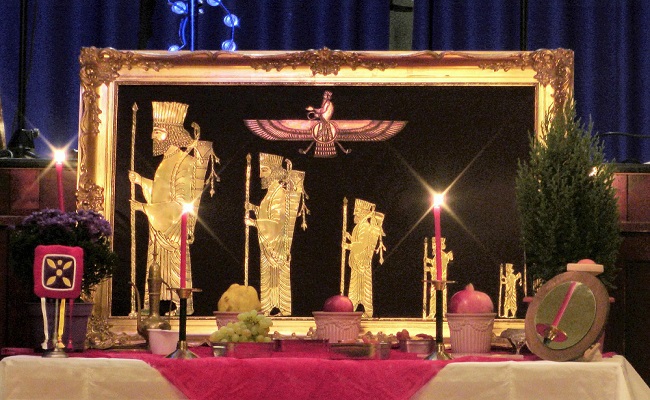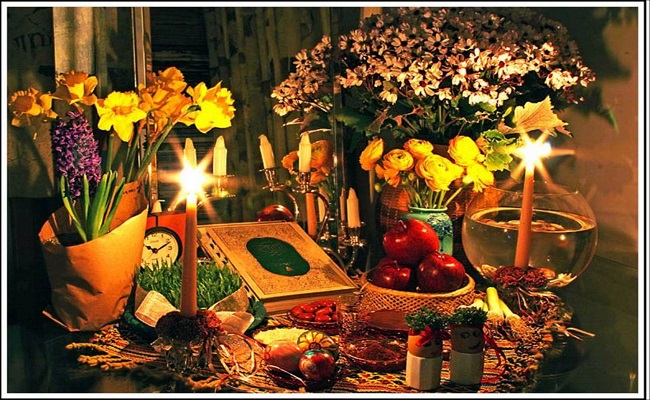Nowruz
Kamâncheh
August 26, 2019Lavash
August 26, 2019Nowruz,Iranian Multinational Celebration
Nowruz (Persian: نوروز Nowruz) is the traditional holiday of Iranians who celebrate the new year of the Persian calendar (the first day of spring). The holiday is celebrated by some communities on March 21 and by others on the day of the vernal equinox, the date of which varies between March 20 and 22.
The term Nowruz first appeared in Persian Empire documents in the 2nd century BCE, but there is reason to believe that the celebration is much older and was probably already an important day during the Achaemenid dynasty (c. 648 BC – 330 BC).
The main tradition of Nowruz is the setting up of the Haftsin (هفت سین, the seven ‘S’), seven objects whose name begins with the letter S or sin (س) of the Persian alphabet, which are seven specific objects arranged on a table corresponding to the seven creations and the seven immortals protecting them. Today, they have been modified a bit but the symbolism remains.

The following list is an example of the objects used to make Haftsin:
- sabzeh – wheat germ, barley, or lentil growing in a dish (symbolizing rebirth)
- samanou – a very sweet dough made from sprouted wheat (symbolizing abundance)
- senjed – the dried fruit of the jujube tree
- sîr – garlic (medicine)
- sîb – apples (beauty and good health)
- somaq – sumac berry (the color of sunrise and health)
- serkeh – vinegar (age and patience)
- sonbol – the fragrant hyacinth flower (the arrival of spring)
- sekkeh – coins (prosperity and health)
Other objects on the table can include the following:
- pastries
- burning candles (happiness)
- a mirror
- painted eggs, perhaps one for each member of the family (fertility)
- a bowl with two (or more) goldfish (life)
- a bowl of water containing a bitter orange (the earth floating in space)
- a sacred book (for example the Avesta, the Koran) or a book of poetry (almost always the Shâh Nâmâ or the divan of Hafez or Gathas)
Other traditions of Nowruz include khaneh tekani (a great “spring cleaning”), Chaharshanbesouri (Persian Festival of Fire), and Sizdeh Bedar (Nature’s Day).

